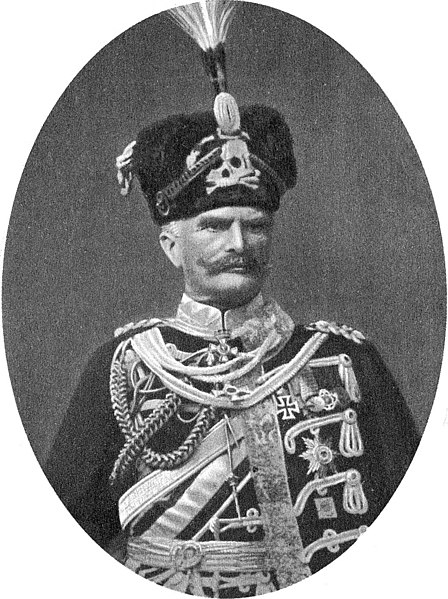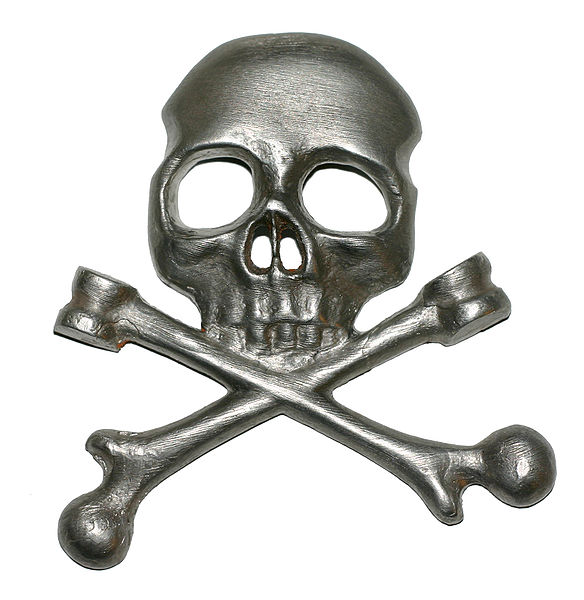Anton Ludwig Friedrich August Mackensen, was a German field marshal. He commanded Army Group Mackensen during World War I (1914–1918) and became one of the German Empire's most prominent and competent military leaders. After the armistice of 11 November 1918, the victorious Allies interned Mackensen in Serbia for a year. In 1920, he retired from the army. In 1933 Hermann Göring made him a Prussian state councillor. During the Nazi era (1933–1945), Mackensen remained a committed monarchist and sometimes appeared at official functions in his World War I uniform. Senior Nazi Party members suspected him of disloyalty, but nothing was proven against him.
Mackensen, c. 1880
Mackensen in a hussar uniform
World War I monument erected by Mackensen to the Serbian defenders of Belgrade. The inscription reads "Here Rest Serbian Heroes" in German and Serbian.
Mackensen reviewing Bulgarian troops followed by Crown Prince Boris (c. 1916)
Totenkopf is the German word for skull. The word is often used to denote a figurative, graphic or sculptural symbol, common in Western culture, consisting of the representation of a human skull- usually frontal, more rarely in profile with or without the mandible. In some cases, other human skeletal parts may be added, often including two crossed long bones (femurs) depicted below or behind the skull. The human skull is an internationally used symbol for death, the defiance of death, danger, or the dead, as well as piracy or toxicity.
August von Mackensen, German field marshal in hussar full dress prior to 1914, with the Totenkopf on his fur busby
Hussar from Husaren-Regiment Nr. 5 (von Ruesch) in 1744 with the Totenkopf on the mirliton (Ger. Flügelmütze)
Totenkopf badge worn by the Brunswick Leibbataillon ("Life-Guard Battalion") at the Battle of Waterloo in 1815
A Garford-Putilov Armoured Car used by the Freikorps in 1919, with a Totenkopf painted on the side







